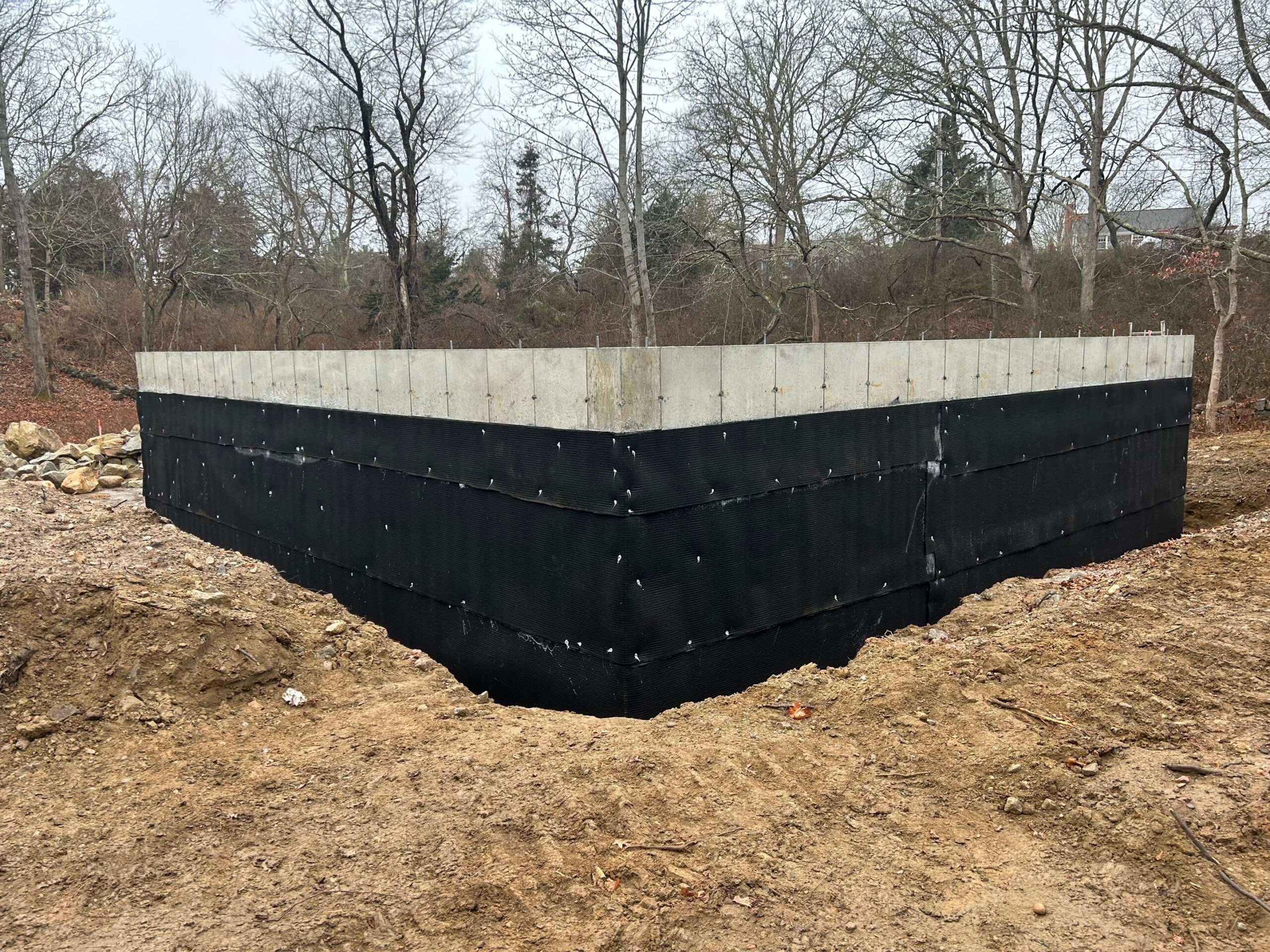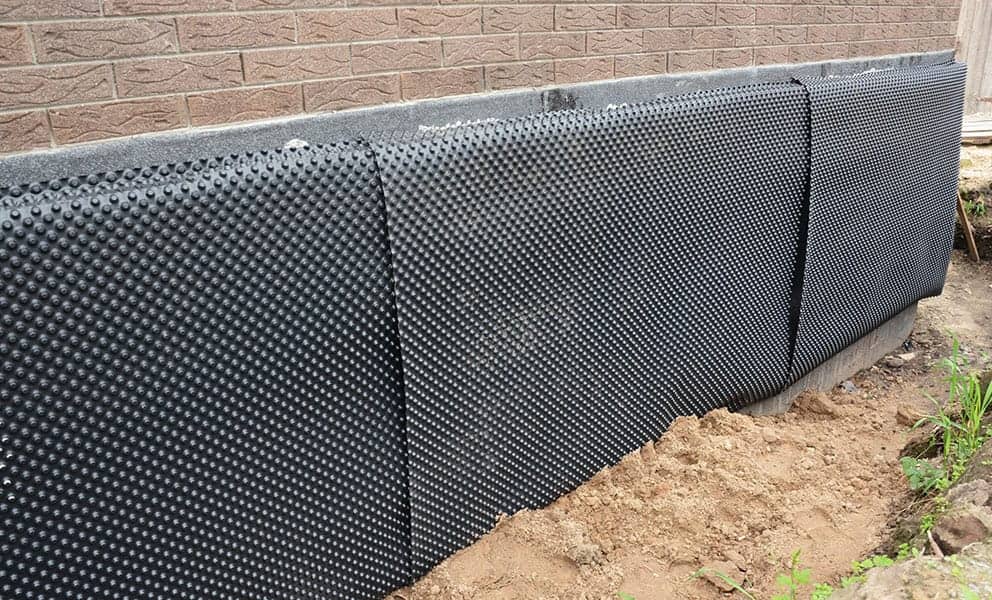Checking Out the Various Techniques and Solutions for Effective Damp Proofing
Dampness in buildings postures substantial challenges to both structural honesty and interior air high quality. Numerous strategies and remedies have actually emerged to combat this pervasive concern. From typical damp-proof membranes to ingenious chemical therapies, each approach offers unique benefits. Understanding these options is crucial for effective moisture control. Nevertheless, selecting the appropriate solution depends upon specific building conditions and demands, prompting additional expedition into the most efficient wet proofing methods offered.
Understanding the Reasons of Dampness
Wetness can develop from various sources, comprehending these reasons is important for efficient remediation. Generally, wetness originates from 3 key sources: climbing damp, passing through damp, and condensation. Climbing wet occurs when groundwater travels up-wards via permeable materials, such as brick or rock, frequently due to a lack of an efficient barrier (mould removal newcastle). Permeating wet is generally created by external factors, consisting of roofing leakages, defective seamless gutters, or damaged walls, enabling water to infiltrate a home. Condensation, on the various other hand, arises from excess dampness airborne, frequently aggravated by poor air flow and temperature level differences, resulting in water beads developing on surfaces. Recognizing these underlying problems is necessary, as each kind of dampness calls for a tailored technique for remediation. Correct evaluation assists in identifying one of the most efficient options, inevitably protecting the structural integrity of a building and boosting interior air top quality
Traditional Damp-Proof Membrane Layers

Chemical Damp-Proofing Solutions
Chemical damp-proofing remedies supply an ingenious strategy to avoid wetness intrusion in buildings. These approaches commonly entail the application of fluid chemicals that pass through masonry and form a barrier versus climbing damp. Generally used chemicals include silanes, siloxanes, and other water-repellent representatives that react with surface area products to create a hydrophobic layer.The application process generally needs boring openings into the wall surfaces, injecting the chemical service, and permitting it to treat. This technique is particularly beneficial for older frameworks where standard damp-proof membrane layers may be impractical. Chemical damp-proofing can be less disruptive and a lot more cost-efficient than extensive renovation projects.While efficient, these remedies depend on proper application and ecological conditions for peak efficiency. mould treatment newcastle. Regular maintenance and tracking are important to guarantee the long life of the damp-proofing treatment. On the whole, chemical damp-proofing represents a functional choice for guarding buildings against moisture-related damages
Cavity Wall Surface Building Strategies
Dental caries wall building strategies use various advantages, especially in wetness control and energy performance. By including an air void between two layers of stonework, these walls properly reduce water ingress while boosting insulation. This mix not just secures frameworks from moisture yet likewise adds to decreased power usage.
Advantages of Dental Caries Wall Surfaces
When taking into consideration efficient wet proofing methods, the benefits of cavity walls stand apart prominently. Cavity walls are composed of two separate layers, producing an air void that effectively lowers wetness penetration. This design minimizes the risk of dampness, as the outer wall surface acts as a barrier versus rainfall and water access. Furthermore, tooth cavity walls improve thermal insulation, which adds to energy effectiveness by minimizing heat loss. They additionally supply sound insulation, aiding to create a quieter interior setting. In addition, the air void permits ventilation, which assists in dampness control and minimizes the likelihood of mold and mildew growth. These advantages not just boost the overall comfort of a building however likewise add to its durability and architectural integrity.
Dampness Control Strategies
Efficient wetness control approaches are critical in dental caries wall building to assure long-lasting protection versus wetness. One main approach involves the incorporation of weep holes, which help with water drainage from the dental caries, stopping buildup. In addition, making use of breathable membranes can help handle moisture levels while permitting caught vapor to get away. Proper placement of insulation is also critical, as it ought to not obstruct water drainage courses. Making certain that the external fallen leaves of the tooth cavity wall are created with waterproof products enhances general durability. Routine upkeep checks are vital to identify more info any kind of obstructions or damage early, guarding the framework's integrity. Ultimately, a combination of these methods develops a robust protection versus dampness intrusion in cavity wall surfaces.
Insulation and Power Performance
Insulation plays an important role in boosting energy effectiveness within tooth cavity wall construction. By integrating shielding products, these wall surfaces produce a thermal barrier that lessens warmth loss and minimizes energy intake. Efficient insulation not just aids keep a stable interior temperature but likewise minimizes the danger of moisture, as it avoids condensation within the wall surface tooth cavity. Numerous methods, such as using rigid foam boards or mineral wool, can be utilized to attain ideal insulation performance. Additionally, appropriate installation is important to guarantee that spaces and voids are decreased, which can otherwise endanger power efficiency. Inevitably, a well-insulated dental caries wall surface adds greatly to total sustainability and lowers heating & cooling expenses for house owners.
Exterior Damp Proofing Techniques
Outside damp proofing techniques are essential for protecting frameworks from wetness seepage. 2 effective methods include the application of water-proof membranes and the installation of French drains. These solutions aid alleviate water build-up and preserve the stability of structures.
Waterproof Membrane Application
While various techniques exist for protecting against moisture access, the application of water-proof membranes stays a highly effective exterior wet proofing strategy. These membrane layers are generally made from products such as polyethylene, rubber, or changed bitumen, offering a robust barrier versus water penetration. The setup process entails using the membrane layer to the exterior surfaces of foundations or walls, making certain complete coverage to avoid leaks. Appropriate adhesion and sealing at joints are essential to maximizing efficiency. Water-proof membrane layers can be used in different kinds, consisting of fluid coverings and sheet membranes, permitting flexibility based on the certain requirements of the structure. This method not only secures buildings from wetness but likewise enhances their long life and architectural integrity.
French Drainpipe Installation
One reliable technique for managing groundwater and stopping wetness build-up around a building's foundation is the installment of a French drainpipe. This water drainage system consists of a trench filled with crushed rock and a perforated pipeline that reroutes surface area water far from the structure. Appropriate installation calls for mindful planning, guaranteeing that the drain inclines away from the structure to help with perfect water circulation. Additionally, the place of the drain is important; it should be placed in locations susceptible to merging or excess wetness. Normal maintenance, consisting of clearing particles from the gravel and ensuring the pipeline stays unblocked, is essential for long-lasting performance. Ultimately, a well-installed French drain can greatly lower the risk of water-related concerns in cellars and foundations.
Inside Waterproofing Strategies
Inside waterproofing methods are crucial for protecting a structure's inside from moisture seepage and prospective water damages. These techniques normally involve the application of specific materials and methods designed to develop a moisture barrier within the structure. One common technique is the use of waterproof finishings or sealants on walls and floors, which avoid dampness from penetrating surfaces.Additionally, installing indoor water drainage systems, such as sump pumps, can properly take care of water build-up in basements and crawl areas. Another approach includes making use of vapor obstacles, which are set up to hinder wetness motion from the ground right into living spaces.Moreover, attending to any cracks or spaces in wall surfaces or structures with appropriate sealers ensures a detailed defense versus water intrusion. By implementing these interior waterproofing methods, homeowner can considerably minimize the threat of mold growth, architectural damages, and other moisture-related issues. Proper implementation of these strategies is necessary for long-lasting protection and building stability.
Regular Upkeep and Evaluation Practices
Regular maintenance and assessment methods are essential for ensuring the long-lasting efficiency of damp proofing options in any kind of building. Routine checks allow building owners to determine very early indications of dampness breach, such as peeling off paint, mold growth, and stuffy smells. These signs can indicate underlying concerns that need prompt attention.Inspections must be conducted a minimum of every year, concentrating on susceptible areas like basements, crawl spaces, and outside walls. Throughout these evaluations, residential or commercial property owners must take a look at sealers, water drainage systems, and air flow to verify they operate correctly.Additionally, keeping downspouts and rain gutters is necessary, as stopped up systems can result in water accumulation near the foundation. Carrying out a regular maintenance schedule, together with timely repair services, can significantly prolong the life expectancy of wet proofing measures and shield the architectural honesty of the building. Aggressive procedures ultimately add to the general health and safety of the living environment.
Frequently Asked Concerns
How Much Time Does Damp Proofing Usually Last?
The period of moist proofing performance varies, usually lasting between 20 to half a century. Aspects such as application quality, environmental problems, and upkeep practices considerably affect the durability of the wet proofing treatment.

Can I Damp Evidence My Home Myself?
The private pondered the expediency of do it yourself damp proofing. With proper research and the appropriate materials, it is possible. They additionally acknowledged the relevance of expert guidance to ensure lasting effectiveness and prevent future problems.
What Are the Indications of Inefficient Damp Proofing?
Signs of ineffective moist proofing consist of persistent mildewy smells, noticeable mold growth, peeling off paint, damp patches on wall surfaces, and wood degeneration - damp removal newcastle. Home owners must resolve these concerns immediately to stop more damage and wellness issues
Does Damp Proofing Affect Indoor Air Quality?

How Much Does Professional Damp Proofing Price?
Specialist moist proofing costs vary substantially, generally varying from $1,000 to $5,000 depending upon the building's size, the extent of the moist problem, and chosen techniques. Each circumstance needs a tailored evaluation for precise rates. Typically, dampness originates from three primary sources: increasing moist, penetrating damp, and condensation. When considering efficient wet proofing approaches, the advantages of tooth cavity wall surfaces stand out plainly. External wet proofing approaches are necessary for shielding structures from dampness seepage. While various methods exist for stopping wetness ingress, the application of waterproof membrane layers remains a highly efficient external wet proofing method. Indications of ineffective wet proofing include consistent stuffy odors, visible mold and mildew development, peeling off paint, damp patches on wall surfaces, and timber decay.